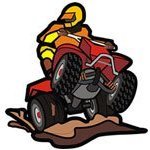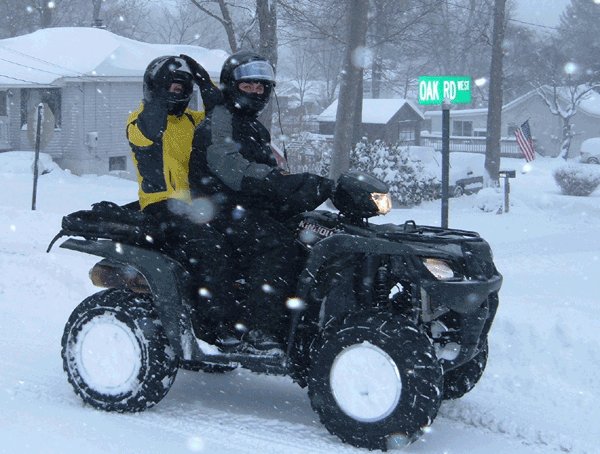Newbie with 97 Polaris xpress 300 carb issues... Please help!!!!
-
Similar Forum Topics
-
By ATVNetwork
As the 2025 ATV Motocross National Championship Series (ATVMX), an AMA National Championship, got underway with back-to-back Florida AMA Pro only events, it was evident that Phoenix Racing Yamaha’s Joel Hetrick picked up where he left off last season.View the full article
-
By oxidized_black
these are what i have in my collection ... always looking for more
1985 - 1995 Polaris All Models service manual
1996 - 1998 Polaris All Models service manual
1996 - 2003 Polaris Sportsman & Xplorer 500 service manual
1996 - 2003 Sportsman 400 & 500 ~ Xplorer 500 service manual
1999 - 2000 Polaris All Models service manual
2001 Polaris 90 service manual
2001 Polaris Scrambler 50 ~ 90 Sportsman service manual
2001 Polaris Sportsman 500HO Parts Manual
2001 Polaris Sportsman 500 Parts Manual
2002 - 2003 Polaris Sportsman 600 & 700 Servive Manual
2002 Polaris Sportsman 700 service manual
2003 - 2005 Polaris Magnum 330 service manual
2003 Polaris Predator 500 service manual
2003 Polaris Predator Parts Manual
2003 Polaris Trail Blazer 250 service manual
2003 Polaris Trail Boss 330 service manual Part I
2003 Polaris Trail Boss 330 service manual Part II
2003 Polaris Trail Boss 330 service manual Part III
2004 Polaris Predator 500 Owner's Manual
2004 Polaris Sportsman Owner's Manual
2005 Polaris 400 & 500 Sportsman service manual
2005 Polaris 700EFI Owner's Manual
2005 Polaris 800EFI Owner's Manual
2005 Polaris Sportsman 400 Parts Manual
2005 Polaris Sportsman 500 Parts Manual
2005 Polaris Sportsman 6x6 Owner's Manual
2005 Polaris Sportsman 700EFI & 800EFI service manual
2005 Polaris Sportsman 800 Twin EFI Parts Manual
2006 - 2007 Polaris Outlaw 500 service manual
2007 Polaris 700 800 800x2 EFI service manual
2007 Polaris Ranger 700EFI 6x6 Parts Manual2007 Polaris Ranger 700 4x4 & 6x6 service manual
2007 Polaris Ranger XP 4x4 service manual
2007 Polaris Sportsman 450 & 500EFI - 500X2EFI service manual
2007 Polaris Sportsman 700 800 - 800EFI service manual
2008 Polaris Sportsman 500EFI & 500x2 service manual
2008 Polaris Ranger 6x6 700EFI Parts Manual
2008 Polaris 800 RZR service manual
2008 Polaris Sportsman 700x2 - 800EFI - 800 Touring service manual
2009 Polaris 850HD EPS service manual
2009 Polaris Outlaw 450 & 525 service manual
2009 Polaris Outlaw 90 service manual
2009 Polaris Predator 50 service manual
2009 Polaris Ranger 2x4 service manual
2009 Polaris Ranger 4x4 Crew service manual
2009 Polaris Ranger 500 2x4 service manual
2009 Polaris Ranger 500EFI 4x4 service manual
2009 Polaris Ranger 500EFI 4x4 service manual
2009 Polaris Ranger 700 4x4 Crew service manual
2009 Polaris Ranger 700 4x4 service manual
2009 Polaris Ranger INTL service manual
2009 Polaris Ranger RZR 170 service manual
2009 Polaris Scramber 500 service manual
2009 Polaris Sportsman 300 & 400HO service manual
2009 Polaris Sportsman 450 & 500X2 service manual
2009 Polaris Sportsman 500 service manual
2009 Polaris Sportsman 6x6 800 service manual
2009 Polaris Sportsman 800EFI & 800EFI service manual
2009 Polaris Sportsman 550XP service manual
2009 Polaris Sportsman 850XP service manual
2009 Polaris Trail Boss - Trailblazer 330 service manual
2010 Polaris Ranger RZR S service manual
2011 Polaris Ranger RZR S service manual
2011 Polaris Ranger RZR SW service manual
2012 Polaris Sportsman 400 service manual
Visit the Polaris service manual Section: https://www.quadcrazy.com/files/category/7-polaris-atv/
-
By beast6228
I've been trying to piece this Lakota 300 back together, slowly. It's been a rabbit hole however. I replace one thing, then it leads to replacing other things. Anyway, When I got this thing I noticed that the hose coming off the camshaft cover wasn't attached to anything, it was just hanging loose. (It's literally just a foot long hose attached to nothing) I figured since it was venting the head it would be ok and I am sure it is.
However, last night I was looking at the service manual and noticed that it mentioned that this atv has a crankcase breather tube as well. Mine does not have one, so I looked at Partzilla and looked at the parts diagram and sure enough, it's definitely supposed to have one. The problem however is, the service manual does not show how it hooks up and the parts diagram only shows the exploded view of the assembly. I just find that kind of strange, nowhere in the manual does it show how it connects. Does it have it connector, attach to a nipple? It just doesn't say and it bothers me that there is a hole there without anything attached to it. If anyone has a Bayou 300 or Lakota 300 with an intact breather vent system and could possibly take some clear photos of it or know how it connects I would be very grateful. I have searched high and low and cannot find any information on it.
Thanks
-
By Ajmboy
View File 1986-2006 Kawasaki Bayou 300 service manual
This service manual is for a 1986-2006 Kawasaki Bayou 300.
Adding to downloads library.
Submitter Ajmboy Submitted 05/11/2018 Category Kawasaki ATV
-
-
By jhamrick75
If anyone is having issues with the Mikuni VM24SS carb, I thought I would post what issues I had and how I resolved them.
Acquired a 93 Bayou 220 that had sat for over 4 years.
The carb was extremely corroded and pitted and full of leftover fuel.
Cleaned carb and bowl and was able to get the engine to start.
Within 30 seconds exhaust would heat up and start to glow red hot.
Removed carb and recleaned everything, including a second overnight soak.
Needless to say, after removing the carb for the 5th time and my frustration to the limit I
realized that my attention had been to the carb body and not to the bowl.
There is a small brass rod on the bottom of the carb that goes down into the float bowl but is seperated from the main section. I had cleaned that area very well....I had thought.
***The corrosion had sealed off the channel that runs from the main bowl section to the small tube section on the side of the float bowl. No amount of carb cleaner was going to get it to budge. So i took a small nail and started to scrape away the corrosion and was eventually able to dislodge enought of the corrosion that carb cleaner would flow through that channel. ***
I thoroughly cleaned each side of the channel in the float bowl and reinstalled the carb and now the issue of it running lean is gone.
On a second note the fuel mixture screw was a nightmare to remove as the threads had been corroded and wouldnt let the screw come out. I used a little cutting oil and worked the mixture screw in and out until I was able to push past the corroded threads and completely remove the needle. After a couple passes with a tap to clean the threads it is like new again.
Hope this helps if you are having a lean running machine.
-







Recommended Posts
Join the conversation
You can post now and register later. If you have an account, sign in now to post with your account.
Note: Your post will require moderator approval before it will be visible.